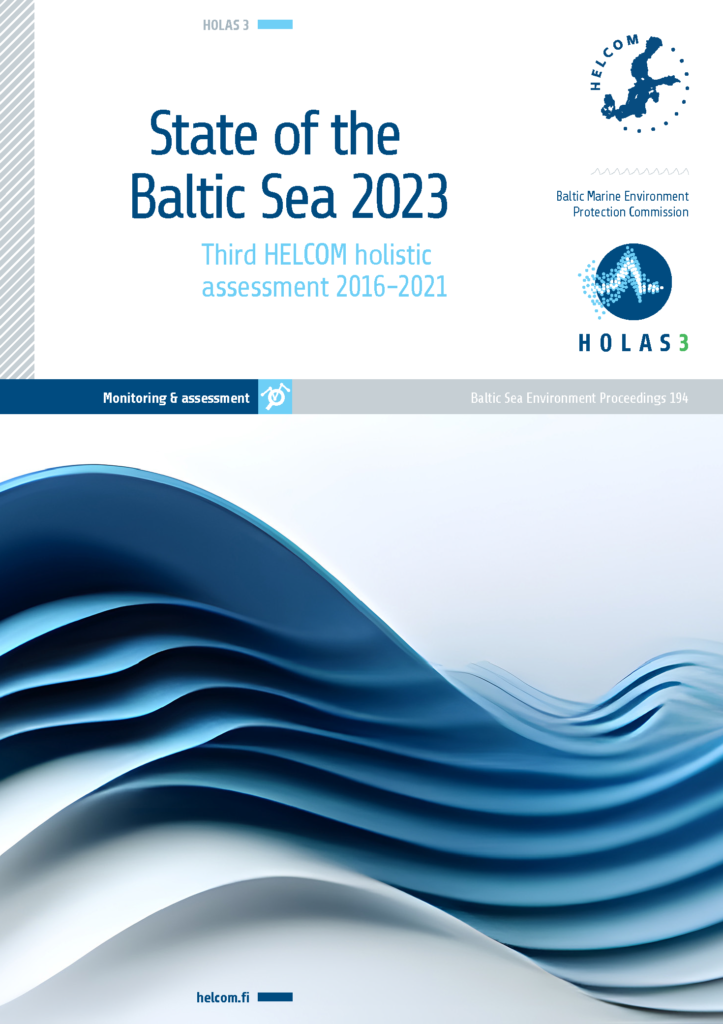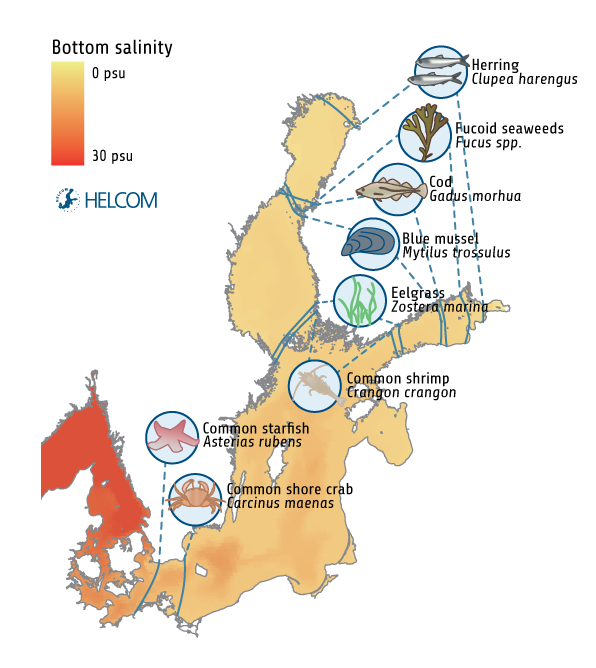ABOUT THE BALTIC SEA
Biodiversity and the Baltic Sea
The Baltic Sea is one of the largest brackish water areas in the world, with a surface area of 420,000 square kilometres. More than one third of the Baltic Sea is shallower than 30 meters, resulting in a small total water volume in comparison to its surface area. Furthermore, the Baltic Sea has no tides and is relatively isolated from other seas. These distinctive environmental conditions form the setting for the unique biodiversity patterns that prevail in the Baltic Sea region.
The water exchange in the Baltic Sea is slow; it takes approximately thirty years for its waters to be fully exchanged (Stigebrandt 2001). Marine water masses enter the Baltic Sea from the North Sea, predominantly during winter storms, while freshwater runs in from numerous rivers. These flows contribute to the characteristic brackish water gradient of the Baltic Sea, with a gradual decrease in salinity from around 15–18 (psu) at the sur- face in its entrance in the Sound, to 7–8 in the Baltic Proper and 0–2 in the northern and eastern parts. Salinity also changes with depth, because high salinity water is denser than water of lower salinity. Many Baltic Sea sub-basins are stratified, with higher salinity water in a deeper layer and lower salinity water above (Meier et al. 2023).
Figure 2.1. The clear majority of the macrospecies in the Baltic Sea are benthic invertebrates. The other main species groups are macrophytes (including algae, vascular plants and bryophytes), followed by fish. Phytoplankton diversity includes the currently known planktonic microalgae and cyanobacteria.

State of the Baltic Sea 2023 — The third HELCOM holistic assessment (HOLAS 3)
State of the Baltic Sea 2023 is a synthesis report that builds on, and integrates, results from a wide range of assessment products produced within the third HELCOM holistic assessment. Its role is to link information from the underpinning assessment products together, thus highlighting the holistic aspects. With this in mind, the summary report focuses on presenting the results and on an in-depth look at why we are seeing these results, providing over-arching context and analysis. The report helps develop a clearer picture of where we are and how things are connected, supporting coordinated and effective measures to strengthen the Baltic Sea environment.

